If you have a ponytail palm and notice that the trunk is soft, there could be several causes. This article will explore six potential causes of a soft trunk on a ponytail palm and solutions for each issue. A soft trunk on a ponytail palm can be caused by over-watering, nutrient deficiencies, pests, disease, or damage. With proper care, you can help your ponytail palm recover from a soft trunk.
Why Is My Ponytail Palm Trunk Soft/Dead?
Root rot is caused by over-watering and can lead to the death of your plant. If you think your plant might have root rot, you should check the roots for signs of decay. You can try to save your plant by removing the affected roots and replanting it in fresh, well-drained soil. One possible reason your ponytail palm trunk might be soft or dead is because of root rot. If the roots are black or mushy, they are probably rotting.

Another possible reason for a soft or dead trunk is damage from cold weather. Ponytail palms are native to warm, tropical climates and can’t tolerate cold temperatures. You can try to save your plant by moving it to a warmer location. If the trunk of your plant is soft or discolored, it might be a sign that it was damaged by cold weather.
If you can’t figure out why your ponytail palm trunk is soft or dead, it might be best to start over with a new plant. Ponytail palms are relatively easy to care for, so it’s not difficult to find a healthy one.
[1] Overwatering
One of the most common problems with ponytail palms is overwatering. The roots of the plant are very sensitive to waterlogging, which can cause the trunk to become soft and spongy. The best way to avoid this problem is to water the plant only when the top inch of soil is dry. If you think your plant is overwatered, try to allow the soil to dry out completely before watering again.
Ponytail palms need bright, indirect light to thrive. If your plant is not getting enough light, try moving it to a brighter location. Another common problem with ponytail palms is that the leaves can turn yellow and drop off if the plant is not getting enough light.
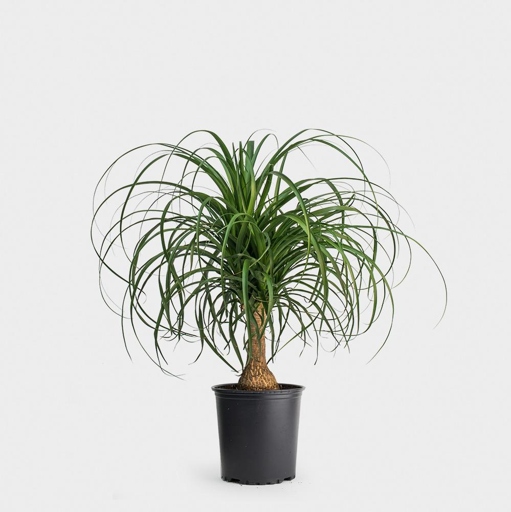
These pests can cause the leaves of the plant to turn yellow and drop off. If you see mealybugs or scale insects on your plant, you can try to remove them with a cotton swab dipped in rubbing alcohol. You can also try spraying the plant with an insecticidal soap. Ponytail palms are also susceptible to mealybugs and scale insects.
How to Prevent Overwatering in Ponytail Palms
Ponytail palms are a type of succulent that store water in their bulbous base, which means they are susceptible to overwatering. Here are some tips to prevent overwatering in ponytail palms:
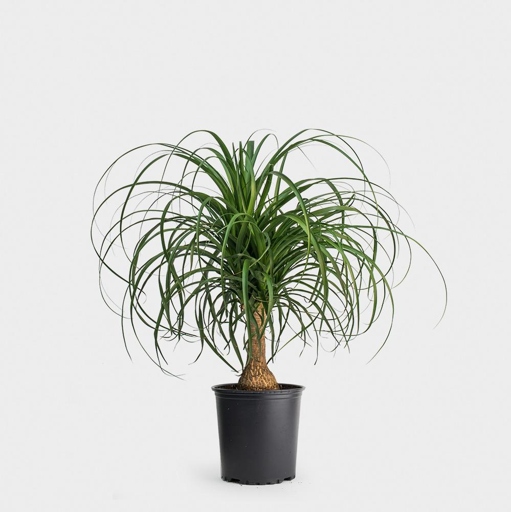
Stick your finger into the soil to check before watering. 1. Water only when the soil is dry.
Do not water from the top of the plant, but rather pour water around the base of the plant. 2.
Cut back on watering to prevent further damage. 3. If the leaves of the plant start to yellow or brown, this is a sign of overwatering.
4. Be sure to use a well-draining pot or container to prevent water from pooling around the roots of the plant.
By following these tips, you can help prevent overwatering in your ponytail palm and keep it healthy and thriving.
[2] Poor Drainage
This can be a serious problem because it can lead to the tree toppling over. However, one problem that can occur with ponytail palms is poor drainage. There are a few things that can cause poor drainage, including: Poor drainage can cause the trunk of the tree to become soft and mushy. Ponytail palms are a type of palm tree that is popular among homeowners for its unique appearance and easy care.
-The tree is planted in an area that doesn’t have good drainage.
-There is a build-up of mulch or other organic matter around the base of the tree.

-The tree is watered too frequently or too heavily.
To solve the problem of poor drainage, you will need to correct the underlying cause. If the tree is planted in an area with poor drainage, you will need to transplant it to a better location. If the tree is watered too frequently or too heavily, you will need to adjust your watering schedule. If there is a build-up of mulch or other organic matter around the base of the tree, you will need to remove it.
How to Fix Poor Drainage
One of the most common problems with ponytail palms is poor drainage. There are a few things you can do to fix this problem. This can lead to the trunk becoming soft and spongy.
If the palm is not getting enough water, the trunk will start to shrivel and the leaves will turn brown. First, make sure the palm is getting enough water. It’s important to water deeply and regularly, especially during the hot summer months.
Second, check the drainage holes in the pot. Use a sharp object to clear the holes and then repot the palm in fresh, well-draining potting mix. If they are blocked, the water will not be able to drain properly and the roots will start to rot.
Place the pot on a raised surface or in a saucer filled with gravel to improve drainage. Third, make sure the pot is not sitting in water. If it is, the roots will start to rot and the trunk will become soft.
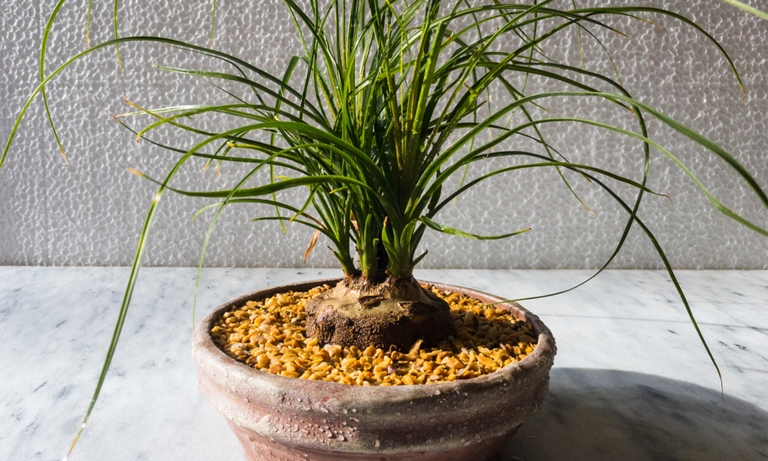
By following these simple tips, you can fix poor drainage and keep your ponytail palm healthy and happy.
[3] Low Light
Ponytail palms are a popular type of houseplant, but they can also be grown outdoors in warm climates. Ponytail palms are a type of palm tree that is native to Mexico and Central America. They are known for their long, thin trunks and their large, bushy leaves.
Ponytail palms are tolerant of low light conditions, but they will not thrive in complete darkness. You can solve this problem by moving your palm tree to a brighter location. If your ponytail palm is not getting enough light, it may start to lose its leaves or its leaves may turn yellow.

To protect your palm tree from the cold, you can move it indoors or wrap it in burlap. Ponytail palms also need to be protected from cold weather. If the temperature drops below 50 degrees Fahrenheit, your palm tree may suffer from cold damage.
How to Fix
This can be caused by a few different things, but luckily, there are a few solutions. One common issue with ponytail palms is soft trunks.
If the trunk is soft and spongy, it may be because it’s absorbing too much water. The solution is to let the plant dry out a bit between watering. One possible cause is too much water.
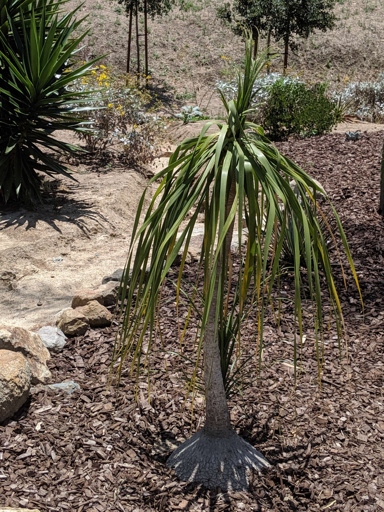
Another possible cause is too little light. If the plant is in a low-light environment, it may not be getting enough energy to support its growth. The solution is to move it to a brighter spot.
If you suspect this is the case, you’ll need to consult with a plant expert to find the best solution. Finally, soft trunks can also be caused by pests or diseases.
[4] Low Temperature
This is usually caused by one of six factors: Ponytail palms are a type of palm tree that is native to Mexico. However, ponytail palms can sometimes develop soft spots on their trunks. Ponytail palms are a popular choice for landscaping because they are relatively low-maintenance and can tolerate a wide range of climates. They are characterized by their long, thin trunks and their large, round leaves.
Too much water. 1.
This is because the roots are not getting enough oxygen, which can lead to rot. If the soil around your ponytail palm is constantly moist, it can cause the trunk to soften. To fix this, make sure that you only water your palm when the top inch or so of soil is dry.
Not enough water. 2.
This is because the roots are not getting enough moisture, which can cause them to shrivel and die. If the soil around your ponytail palm is too dry, it can also cause the trunk to soften. To fix this, make sure that you water your palm regularly, especially during periods of drought.
3. Poor drainage.
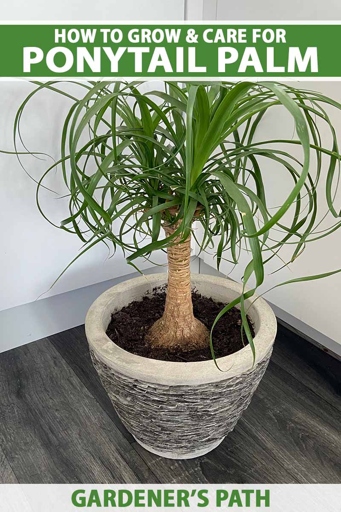
If the soil around your ponytail palm does not drain well, it can also cause the trunk to soften. To fix this, make sure that you plant your palm in an area that has good drainage. This is because the roots are sitting in water, which can cause them to rot.
4. Low temperature.
If the temperature drops too low, it can cause the trunk to soften. To fix this, make sure that you protect your palm from frost by covering it with a tarp or blanket during cold weather. Ponytail palms are tropical plants, and they prefer warm temperatures.
Sunburn. 5.
This is because the leaves are not able to photosynthesize properly, which can stress the plant. If the leaves of your ponytail palm are getting sunburned, it can also cause the trunk to soften. To fix this, make sure that you provide your palm with some shade, either by planting it in an area that gets partial sun or by using a sun umbrella.
6. Pests.
To fix this, make sure that you treat your palm with an appropriate pesticide. This is because the pests can damage the roots, which can stress the plant. If your ponytail palm is infested with pests, it can also cause the trunk to soften.
How to Fix
First, check the roots to see if they are healthy and moist. If you have a ponytail palm with a soft trunk, there are a few things you can do to try to fix the problem. If the trunk is still soft after taking these steps, you may need to consult a professional. If the roots are healthy, you can try to firm up the trunk by wrapping it with burlap or a similar material. If the roots are dry or dead, you will need to replant the palm. You can also try staking the palm to help support the trunk.
[5] Dehydration
However, sometimes the trunk of a ponytail palm can become soft and spongy. This is usually caused by dehydration and can be fixed with a few simple steps. Ponytail palm trees are known for their distinctive shape and long-lasting leaves.
The best way to prevent dehydration is to water the tree regularly, especially during hot weather. When the tree doesn’t have enough water, the trunk can start to sag and become spongy. Dehydration is one of the most common causes of a soft ponytail palm trunk. Make sure the soil is moist but not soggy, and don’t let the tree dry out completely.
If the trunk is already soft, you can try to rehydrate it by giving the tree a deep watering. Repeat this process a few times until the trunk starts to firm up. You can also try misting the trunk with water several times a day. Soak the soil around the tree until it’s saturated, then let the water drain away.

This will help the tree conserve water and hopefully firm up the trunk. If the trunk is still soft after you’ve tried rehydrating it, you may need to prune away some of the leaves. Start by removing any dead or dying leaves, then trim back any that are significantly wilted. If the tree is still struggling, you may need to remove more leaves until it starts to recover.
You may also need to prune away some of the leaves to help the tree conserve water. If the trunk is already soft, try to rehydrate it by giving the tree a deep watering or misting it with water several times a day. Water the tree regularly, especially during hot weather, and make sure the soil is moist but not soggy. Ponytail palms are a beautiful addition to any home, but sometimes their trunks can become soft and spongy. Dehydration is the most common cause of this problem, but it can usually be fixed with some simple steps.
How to Fix
Over time, the trunk can become soft and mushy, causing the plant to lose its shape. Ponytail palms are a type of succulent that stores water in its trunk. There are several reasons why this may happen, including overwatering, pests, and disease.
Cut away any affected roots and replant the ponytail palm in fresh, well-draining soil. To fix a soft trunk, start by removing the plant from its pot and inspecting the roots. If the roots are mushy or black, they may be rotting. If the trunk is only slightly soft, you may be able to firm it up by gently pressing on it with your fingers.

If the trunk is soft due to pests, treat it with an insecticide or fungicide according to the manufacturer’s directions. If the trunk is soft due to disease, you may need to destroy the plant to prevent the disease from spreading. If the trunk is soft due to overwatering, allow the plant to dry out completely before watering it again. Be sure to empty any water that collects in the saucer beneath the pot.
[6] Other Contributing Factors
This makes them susceptible to over-watering, which can cause the trunk to soften and collapse. Ponytail palms are a type of succulent, meaning they store water in their leaves and stems.

If they don’t get enough light, their leaves will start to droop and the trunk will soften. Ponytail palms also need bright light to thrive.
This is caused by too much water and not enough drainage. Finally, ponytail palms are susceptible to root rot. Root rot can cause the trunk to soften and collapse.
What to Do If Your Ponytail Palm Has a Soft Trunk?
First, check the roots to see if they are healthy and moist. Third, check the leaves to see if they are yellow or brown. If the leaves are yellow or brown, you may need to fertilize the palm. If the soil is too wet, you may need to add more drainage. If the soil is too dry, you may need to water the palm more often. If your ponytail palm has a soft trunk, there are a few things you can do to try to fix the problem. Second, check the soil to see if it is too wet or too dry. If the roots are dry or unhealthy, you may need to replant the palm.
Check the Root System
Finally, trunk softening can also be a sign of a nutrient deficiency. If you think your plant is getting too much water, check the root system to see if it’s waterlogged. This can be caused by physical damage, such as from digging or trampling, or by pests. If you notice your ponytail palm’s trunk is soft, there are a few possible causes. If your plant isn’t getting enough of the right nutrients, it can start to weaken. Ponytail palms are a type of succulent that stores water in its trunk, which can make it susceptible to root rot. Another possible cause of trunk softening is root damage. The most common is overwatering, which can cause the roots to rot. If you see any signs of damage to the roots, you’ll need to take action to protect the plant. If you think your ponytail palm might be deficient in nutrients, you can try fertilizing it.
Scenario #1: Roots are Strong, But the Trunk is Soft
The trunk is covered in a brown, fibrous material that is soft to the touch. The tree gets its name from the way its leaves are arranged in a ponytail-like fashion at the top of the trunk. Ponytail palms are a type of palm tree that is known for its long, thin, and flexible trunk.
The tree is also popular in the United States, where it is often grown in containers or as a houseplant. Ponytail palms are native to Mexico and Central America, and they are often used as ornamental plants in these regions.
Ponytail palms are relatively easy to care for, but they can sometimes suffer from trunk softening. This problem is usually caused by one of six factors:
Over-watering 1.
Poor drainage 2.
Compacted soil 3.
Nutrient deficiency 4.
Pest infestation 5.
6. Physical damage
This can cause the trunk to soften and collapse. The tree’s roots need oxygen to stay healthy, and too much water can suffocate them. Over-watering is the most common cause of trunk softening in ponytail palms.
To avoid over-watering, only water the tree when the top inch of soil is dry. If the soil is constantly wet, try to improve drainage by adding sand or gravel to the pot.
Poor drainage is another common cause of trunk softening. Ponytail palms need well-drained soil to stay healthy. If the soil is too dense or compacted, water will not be able to drain properly and the roots will suffocate.
You can also try planting the tree in a raised bed or on a mound of soil. To improve drainage, add sand or gravel to the pot.
Nutrient deficiency is another possible cause of trunk softening. If the tree is not getting enough nutrients, it will start to lose its leaves and the trunk will soften. Ponytail palms need a balanced fertilizer to stay healthy.
Use a balanced fertilizer that is high in nitrogen, phosphorus, and potassium. To prevent nutrient deficiency, fertilize the tree every two weeks during the growing season.
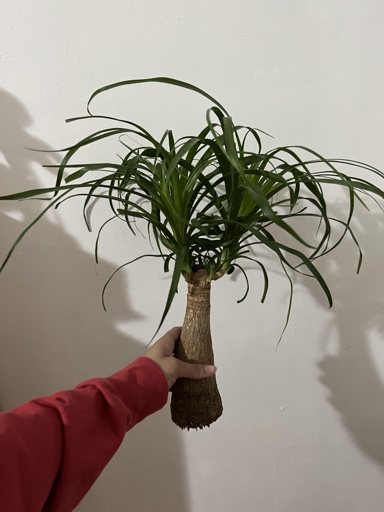
Ponytail palms are susceptible to scale insects and mealybugs. These pests suck the sap out of the tree, causing it to weaken and the trunk to soften. Pest infestation is another possible cause of trunk softening.
To control pests, regularly inspect the tree for signs of infestation. If you see any pests, remove them by hand or treat the tree with an insecticide.
If the tree is hit by a heavy object or damaged in some other way, the trunk can soften and collapse. Physical damage is the last possible cause of trunk softening.
To prevent physical damage, avoid placing the tree in an area where it could be hit by falling objects. You should also be careful when handling the tree, as it is fragile.
Scenario #2: Soft Trunk with Mild Signs of Root Rot
Next, trim away any roots that are black or mushy. With proper care, your plant should recover and continue to thrive. If your ponytail palm trunk is soft with mild signs of root rot, there are a few things you can do to save your plant. First, remove any dead or dying leaves, as these can harbor disease. Finally, replant your ponytail palm in fresh, well-draining soil.
Scenario #3: When Root Rot is Too Severe
The first step is to remove the plant from its pot and inspect the roots. If you suspect that your ponytail palm has root rot, it’s important to act quickly. When root rot is too severe, the ponytail palm trunk will be soft to the touch and may even be mushy. The leaves will also be drooping and yellowing, and the plant may be stunted. If they are black and mushy, root rot is the likely culprit.

To save a plant with root rot, you’ll need to carefully remove the affected roots and replant the ponytail palm in fresh, well-draining potting mix. If the root rot is severe, you may need to cut away some of the trunk to remove all of the affected tissue. Once your plant is replanted, water it sparingly and keep an eye out for new growth. With proper care, your ponytail palm should recover from root rot and continue to thrive.
How to Revive Rotting Ponytail Palm
However, sometimes ponytail palms can develop soft spots on their trunks. Ponytail palms are a popular houseplant because they are easy to care for and have a long lifespan. This is usually caused by over-watering or poor drainage. If your ponytail palm has a soft spot, there are a few things you can do to revive it.
Cut away any rotten roots and repot the plant in fresh, well-draining potting mix. If the roots are mushy or black, they are probably rotting. First, remove the plant from its pot and check the roots.

Next, water the plant carefully. If the soft spot is on the trunk of the plant, you can try to firm it up by applying pressure with your fingers. Allow the potting mix to dry out completely between waterings.
If the soft spot is on a leaf, you can try to remove it with a sharp knife. Make sure to sterilize the knife before you use it.
With a little care, you can get your plant back to its healthy self in no time. If your ponytail palm has a soft spot, there are a few things you can do to revive it.
Step #1 – Gather Your Supplies
Over time, the trunks can become soft and mushy due to a variety of reasons. Ponytail palms are a type of succulent that store water in their trunks. Here are the six most common causes of trunk softening in ponytail palms, and what you can do to fix the problem.
The best solution is to let the plant dry out completely before watering it again. If the trunk is severely soft, you may need to cut away the mushy parts and allow the plant to callous over before watering it again. Excess water. 1. If the trunk of your ponytail palm is soft and mushy, it’s likely due to too much water.
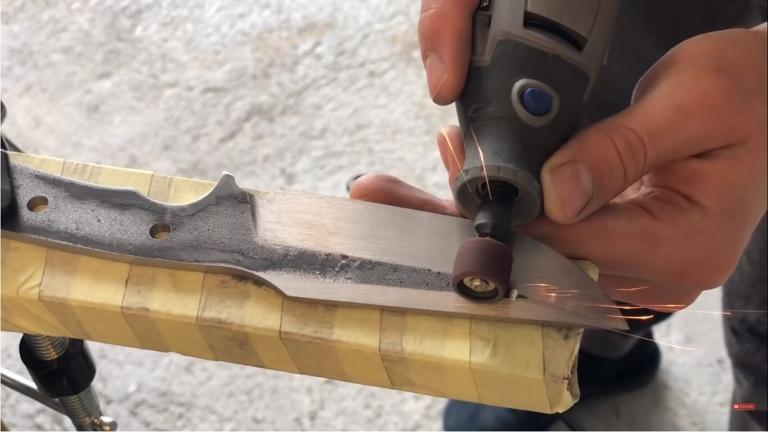
Lack of light. Move the plant to a brighter location and make sure it receives at least six hours of direct sunlight each day. 2. Ponytail palms need bright, direct sunlight to thrive. If the plant is not getting enough light, the trunk will become soft and spongy.
Use a fertilizer designed for succulents and follow the directions carefully. Apply the fertilizer to the soil, not the leaves or trunk of the plant. Too much fertilizer can cause the trunk of a ponytail palm to soften. 3. Over-fertilizing.
You may also need to treat the plant with an insecticide or fungicide. Aphids, mealybugs, and other pests can cause the trunk of a ponytail palm to soften. 4. Inspect the plant carefully and remove any pests you find. Pests.
These include root rot, stem rot, and fungal diseases. Disease. Several diseases can cause the trunk of a ponytail palm to soften. 5. If you suspect your plant has a disease, take it to a nursery or garden center for diagnosis and treatment.
The trunk of a ponytail palm can also soften if it’s damaged by physical means. This can happen if the plant is dropped or if the trunk is cut. Physical damage. 6. If the damage is severe, the plant may not be able to recover.
If the trunk of your ponytail palm is soft, there are several possible causes. Excess water, lack of light, over-fertilizing, pests, disease, and physical damage can all lead to trunk softening. Inspect the plant carefully and take appropriate action to fix the problem.
Step #2 – Clean Your Tools
To clean your tools, dip them in a solution of one part bleach to nine parts water. Let them soak for at least five minutes, then rinse them off with clean water. If your tools are dirty, they can introduce diseases and pests to your ponytail palm.
Step #3 – Unpot your Ponytail Palm
When you unpot your ponytail palm, you may notice that the trunk is soft. This is a common problem that can be caused by several factors.
One possible cause is that the tree was not properly watered before it was potted. If the tree was too dry, the roots will not have been able to properly anchor the tree in the pot. This can cause the trunk to become soft over time.
Another possible cause is that the tree was potbound. This can make it difficult for the tree to take up water, leading to a soft trunk. This means that the roots were growing too tightly in the pot, causing them to become constricted.
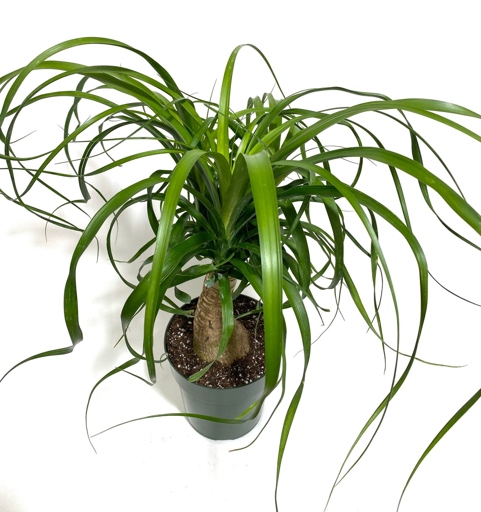
Be sure to water the tree well before repotting to avoid any further problems. The best way to solve this problem is to repot the tree in a larger pot. This will give the roots more room to grow and will allow the tree to take up water more easily.
Step #4 – Cutoff Rotten roots
This may seem like a daunting task, but it’s actually quite easy. If the roots of your ponytail palm are rotten, it’s time to cut them off. Here’s how to do it:
Start by removing any dead or dying leaves from the plant. This will help you get a better view of the roots. 1.
Using a sharp knife, carefully cut away any rotten roots. 2.
3. Once all of the rotten roots have been removed, replant the ponytail palm in fresh soil.
Water the plant well and give it plenty of sunlight. 4.
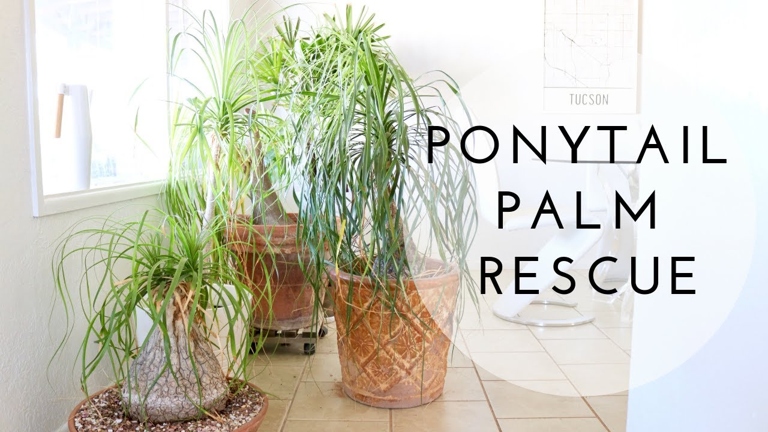
By following these steps, you can get rid of rotten roots and help your ponytail palm thrive.
Step #5 – Rinse the Healthy Roots
Overwatering is the most common cause of root rot, so be sure to check the soil before watering. If the roots are waterlogged, they will start to rot and the trunk will become soft. The roots need to be able to dry out between waterings, so make sure the pot has drainage holes. If you notice your ponytail palm’s trunk is soft, it’s time to check the roots.

If the roots are white and healthy, the plant just needs to be watered less often. If the roots are brown and mushy, the plant has root rot and will need to be replanted in fresh, dry soil. To check the roots, carefully remove the plant from the pot.
Step #6 – Let Them Air Dry
This step is important, as it allows the trunk to dry out completely and prevents any further rot or damage. Once you’ve removed the excess water from your ponytail palm’s trunk, it’s time to let it air dry.
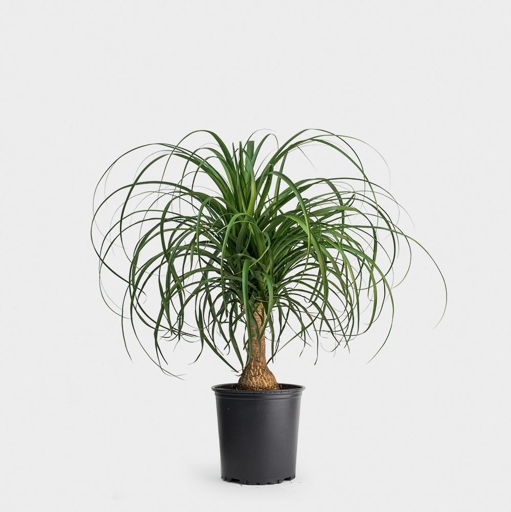
To air dry your ponytail palm’s trunk, simply set it in a well-ventilated area and allow it to dry out completely. This may take a few days, so be patient. Once the trunk is completely dry, you can move on to the next step.
Step #7 – Discard Old Potting Mix
Over time, potting mix breaks down and doesn’t provide the same level of support and drainage that it once did. One possible cause is old potting mix. If you suspect this is the problem, discard the old potting mix and replace it with fresh mix. If you notice your ponytail palm’s trunk is soft, it’s time to take action.
Step #8 – Repot your Ponytail Palm
They are native to Mexico and Central America and are popular houseplants. However, they can suffer from trunk softening if they are not cared for properly. Ponytail palms are easy to care for and are tolerant of neglect. Ponytail palms are a type of succulent that grows in a rosette shape.
Trunk softening is a condition where the trunk of the ponytail palm becomes soft and spongy. This is usually caused by too much water. The trunk can also become soft if the plant is pot-bound or if the roots are damaged.
Ponytail palms should be repotted every two to three years. This will help to prevent trunk softening. When repotting, use a well-draining potting mix and water the plant sparingly. Be sure to remove any damaged or dead roots.
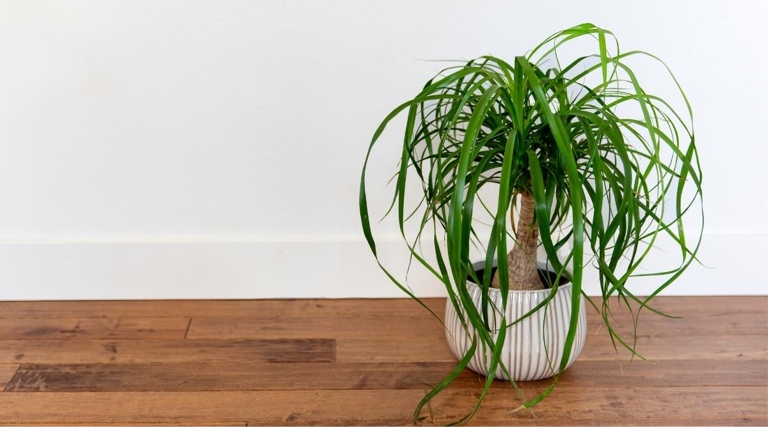
If your ponytail palm has soft trunk, there are a few things you can do to save the plant. If the roots are damaged, you can try to repair them. If the roots are beyond repair, you can try to propagate the plant from a healthy cutting. First, remove the plant from the pot and inspect the roots.
Water the plant sparingly and be sure to provide plenty of light. Once you have removed the damaged roots, you can repot the plant in a well-draining potting mix. With proper care, your ponytail palm should recover from trunk softening and continue to thrive.
Step #9 – Re-evaluate Your Care Routine
Ponytail palms are a popular choice for landscaping in warm climates, as they are relatively low-maintenance and can tolerate drought conditions. Ponytail palms are a type of palm tree that is native to Mexico. They are characterized by their long, thin trunks and their large, round leaves.
However, ponytail palms can sometimes develop soft spots on their trunks. If you notice that your ponytail palm has soft spots on its trunk, you will need to re-evaluate your care routine. This is usually caused by over-watering, as the tree is not able to absorb all of the water that it is being given.

Here are some tips for preventing and treating soft spots on ponytail palm trunks:
Do not water on a schedule, as this can lead to overwatering. -Make sure that you are only watering your tree when the soil is dry.
-If your tree has already developed soft spots, allow the soil to dry out completely before watering again.
-Apply a tree sealant to the trunk to help protect it from further damage.
By following these tips, you can help to prevent or treat soft spots on your ponytail palm trunk.
How To Prevent Ponytail Palm Soft Trunk
Ponytail palms are a popular type of houseplant, but they can sometimes develop soft trunks. There are a few things you can do to prevent this from happening: This is usually caused by too much water or too much fertilizer.
-Make sure you only water your ponytail palm when the soil is dry. Overwatering is the most common cause of soft trunks.
-Don’t fertilize too often. Once every few months is usually enough.
-If you live in an area with high humidity, make sure to mist your ponytail palm regularly. This will help prevent the trunk from drying out.

By following these tips, you can help prevent your ponytail palm from developing a soft trunk.
Frequently Asked Questions
1. What are the six causes of ponytail palm trunk softening?
2. How can I prevent my ponytail palm from softening?
3. How can I tell if my ponytail palm is softening?
4. What should I do if my ponytail palm is softening?
5. Can I save my ponytail palm if it is softening?
6. What will happen if my ponytail palm trunk continues to soften?
1. The six causes of ponytail palm trunk softening are over-watering, nutrient deficiency, pests, disease, and damage.
2. To prevent your ponytail palm from softening, water it only when the soil is dry and fertilize it regularly.
3. You can tell if your ponytail palm is softening if the leaves are drooping, the trunk is sagging, or the tree is leaning.
4. If your ponytail palm is softening, you should stop watering it, fertilize it, and remove any pests or diseases.
5. You may be able to save your ponytail palm if it is softening, but it is difficult to do so.
6. If your ponytail palm trunk continues to soften, the tree will eventually collapse.
Final thoughts
Ponytail palms are a type of palm tree that is native to Mexico. They are characterized by their long, thin trunks and their large, round leaves. Ponytail palms are a popular type of houseplant, but they can sometimes develop trunk softness. This is a condition in which the trunk of the plant becomes limp and droops over. There are several possible causes of trunk softness, including over-watering, lack of light, and nutrient deficiencies. Luckily, there are also several solutions that can help to fix the problem. These include increasing the amount of light the plant receives, allowing the soil to dry out between watering, and fertilizing the plant with a high-quality fertilizer.
